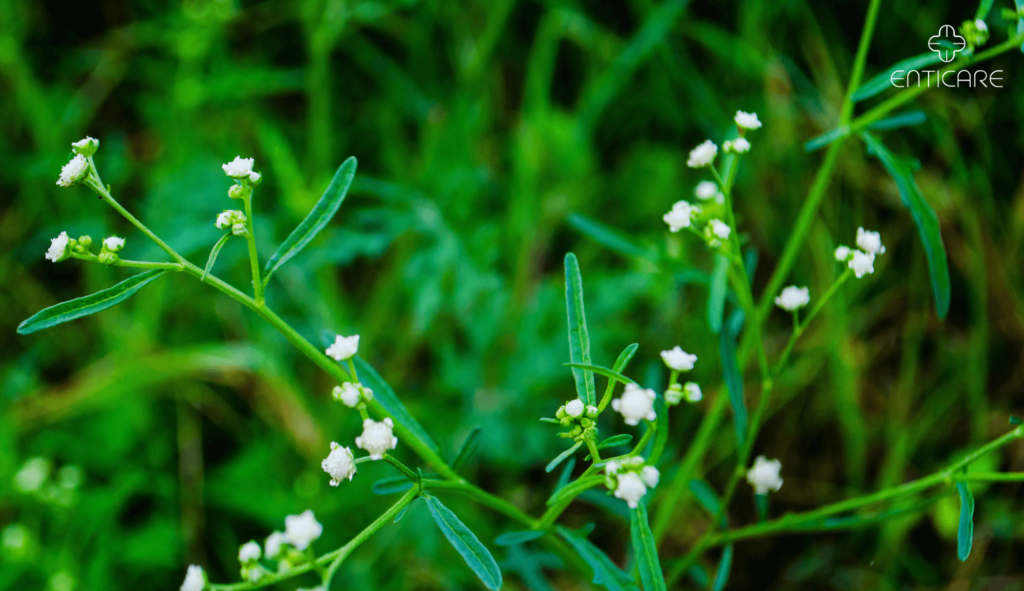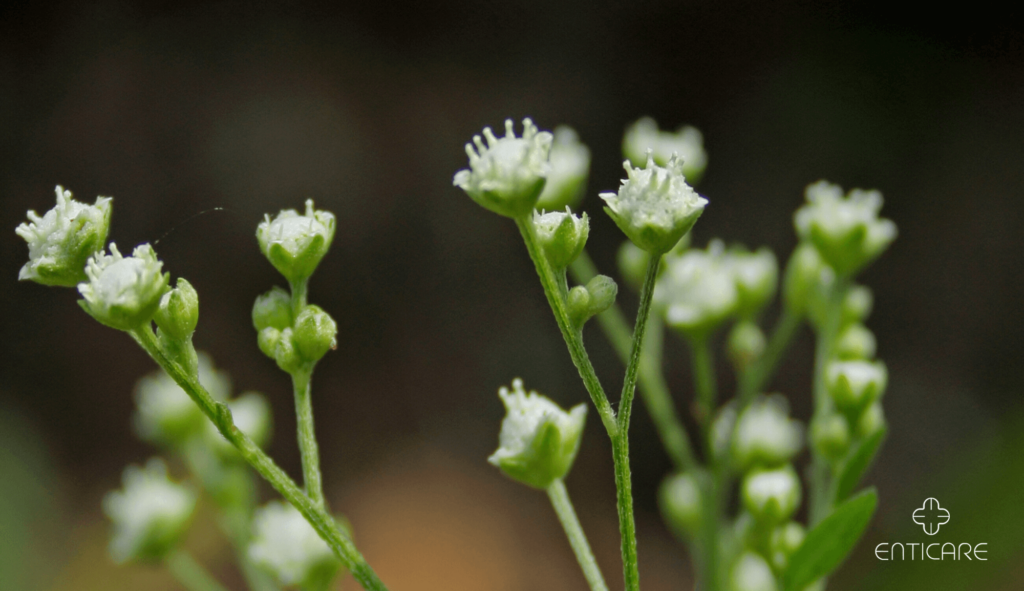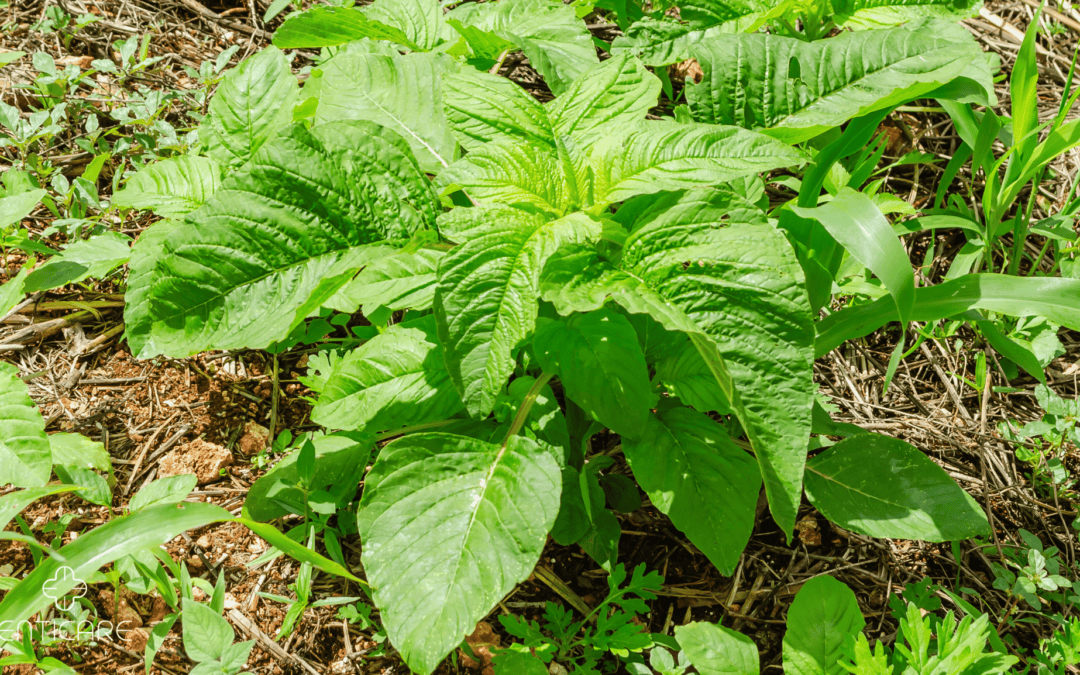Spring is a time for rejuvenation, but for some, the blooming season brings a constant battle with itchy eyes, a runny nose, and endless sneezing. If your allergies worsen around weedy areas, you might be suffering from careless weed allergy, also known as parthenium weed allergy. This blog delves into this under-recognized allergy, providing you with the knowledge to identify the culprit, manage your symptoms, and reclaim your enjoyment of the beautiful spring weather.

Careless weed: A Beautiful Invader with a Sneaky Downside
Careless weed (Parthenium hysterophorus) is a fast-growing, flowering plant native to tropical regions in the Americas. Known for its attractive white flowers with yellow centers, it’s sometimes mistakenly considered an ornamental plant. However, careless weed is a highly invasive species that can quickly take over disturbed areas and roadsides. Unfortunately, the pollen it produces during late spring and summer can trigger allergies in some people.
Peak Pollen Season: When to Be Extra Cautious
Careless weed releases pollen from May to September, with peak season typically occurring in July and August. If you experience allergy symptoms during this time, especially in areas with visible careless weed growth, it’s wise to consider it as a potential culprit.

Recognizing the Enemy: Signs and Symptoms of Careless Weed Allergy
If you suspect a careless weed allergy, watch out for these common symptoms:
- Itchy, watery eyes
- Runny or stuffy nose
- Frequent sneezing
- Coughing
- Scratchy throat
In severe cases, wheezing or difficulty breathing (especially if you have asthma)
Skin rash (This is a more distinctive symptom of careless weed allergy compared to other grass allergies)
These symptoms usually appear within minutes of exposure to careless weed pollen and can linger for several hours.
The Culprit Behind the Chaos: Causes of Careless Weed Allergy
Similar to other allergies, a careless weed allergy arises from an overreaction of your immune system. When you inhale careless weed pollen, your body mistakenly identifies it as a threat, triggering the release of histamines. Histamines are chemicals that cause allergy symptoms like inflammation, itching, mucus production, and in some cases, skin irritation.

Keeping Allergy Symptoms at Bay: Prevention Tips
While complete avoidance might be challenging, here are some ways to minimize your exposure to careless weed pollen:
Stay informed: Check pollen forecasts and plan outdoor activities for low pollen count days (usually mornings after a rain shower).
Know your surroundings: If possible, avoid spending extended periods in areas with visible careless weed growth, such as vacant lots, roadsides, or fields.
Delegate yard work: If careless weed is growing on your property, wear gloves and a mask while removing it, and delegate the disposal to someone not suffering from allergies.
Keep windows closed: Especially during peak pollen season, keep your windows shut and rely on air conditioning with HEPA filters to clean indoor air.
Change clothes and shower: After spending time outdoors, change your clothes and wash your hair to remove lingering pollen.
Maintain a clean environment: Regularly vacuum your home and dust surfaces to remove trapped pollen.
Who’s More Susceptible? Risk Factors for Careless Weed Allergy
Certain factors can increase your risk of developing a careless weed allergy:
Family history of allergies: If allergies are common in your family, you’re more likely to develop allergies yourself.
Hay fever: People with hay fever (allergic rhinitis) are more prone to developing allergies to other airborne allergens, including careless weed pollen.
Asthma: If you have asthma, exposure to careless weed pollen can worsen your symptoms.
Battling the Sniffles and Rashes: Treatment Options for Careless Weed Allergy
Several treatment options can help manage your careless weed allergy:
Over-the-counter medications: Antihistamines like loratadine (Claritin) or cetirizine (Zyrtec) can help alleviate allergy symptoms like sneezing, runny nose, and itchy eyes.
Nasal corticosteroids: Steroid nasal sprays like fluticasone (Flonase) can reduce inflammation in the nasal passages, providing relief from congestion and a runny nose.
Allergy shots (immunotherapy): This long-term treatment involves getting regular injections of small amounts of careless weed pollen over time. It helps desensitize your immune system to the pollen, gradually reducing your allergy symptoms.
Skin soothers: For skin rashes caused by careless weed, topical calamine lotion or hydrocortisone cream can help reduce itching and irritation.
Consult your doctor to determine the most suitable treatment plan for your specific needs. Your health journey begins with Enticare. Reach out to us at 480-214-9000, and let’s discover the ideal treatment for you.

